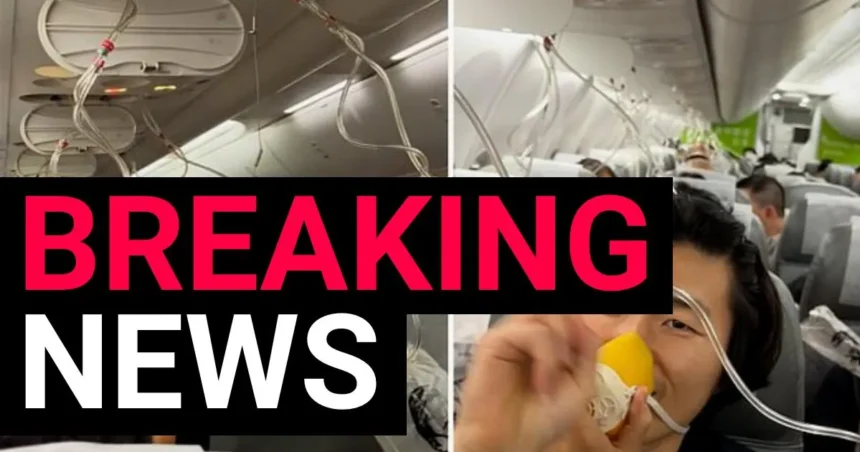Imagine being on a plane when suddenly everything feels wrong. Passengers aboard a Japan Airlines Boeing 737 experienced just that. As the aircraft rapidly dropped 26,000 feet, fear and anxiety filled the cabin. People scrambled to understand what was happening, some frantically writing goodbye messages. The tension was thick, making it clear this was no ordinary flight.
This story isn’t just about a sudden descent—it’s about human resilience and the power of shared fear during a crisis. We’ll explore what led to this dramatic event, how passengers reacted, and what lessons airlines are learning for safer skies.
Background of the Flight
Recently, passengers on a Japan Airlines flight (JL-8696) from Shanghai, China, to Tokyo, the capital of Japan, witnessed heart-stopping and scary moments as the Boeing 737 they were riding on reportedly dropped 26,000 feet in 10 minutes, requiring the use of breathing masks.
Operated under a codeshare arrangement between Japan Airlines and its low-cost subsidiary Spring Japan, the flight, which departed from Shanghai Pudong Airport on June 30 en route to Tokyo Narita Airport, carried 191 passengers.
The abrupt plummet startled the passengers, who panicked and thought the worst—that the plane would crash.

Pic Courtsey -Shanghai Daily -X
Many of the travellers started putting their wills in writing and messaging loved ones with private information like insurance numbers and bank PINs.
Following a cabin depressurisation alert, the aircraft made an emergency landing at Kansai Airport on Monday evening, according to Shanghai Daily. No casualties were reported after the Boeing 737-800, which was carrying 191 passengers, made a safe landing.
Around 6:53 p.m. local time, the plane experienced a mechanical problem in midair, which caused it to rapidly descend from about 36,000 feet to just under 10,500 feet in less than 10 minutes, according to the Associated Press.
During the descent, the pilot activated the pressurisation system warning, declared an emergency, and rerouted the aircraft to Kansai International Airport in Osaka.
As cabin pressure decreased, oxygen masks were withdrawn. As flight attendants gave directions, footage from the aeroplane shows people donning breathing masks.
A Boeing 787 Dreamliner airliner on the Ahmedabad-London route crashed with 30 seconds of takeoff on June 12, killing 270 people.
Read More : https://news360live.in/plane-crash-in-ahmedabad-air-india-flight-live-updates-242-on-board
Since then, there have been numerous near-misses, the majority involving Boeing aircraft.
Conclusion
The descent of the Japan Airlines Boeing 737 was a frightening reminder of how quickly travel can turn dangerous. Passengers, caught in a life-or-death moment, responded with bravery and love—writing farewell notes that show the depth of human emotion.
Modern safety protocols and technological improvements have made aviation safer than ever. Yet, emergencies remind us that quick thinking and emotional resilience are just as vital as safety drills and aircraft maintenance.
If you fly, remember—stay calm, listen to crew instructions, and cherish every moment with loved ones. The skies are safer today, but preparedness and emotional strength always matter.

